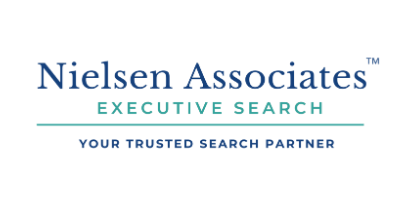Lessons from a New Hire Nightmare

My very first day on the job, I overheard the owners screaming at each other in the office next to mine. A colleague who had been with the company long-term told me not to worry about it because “it was the norm around here.” I was worried. This was not the welcoming, congenial working environment I was told to expect.
During my interview, we discussed that I may eventually be Supervising the HR Generalist, but I was then given Supervisory responsibilities during my first week. I quickly realized that my direct report had been a loyal employee of the company for over 20 years. They were just as qualified and capable at managing the HR functions as I was. They were overwhelmed with their level of responsibility and asked for help; but in return, they were given another boss (me). And I was instructed not to take any responsibilities off their shoulders. The red flags that popped up almost immediately were just the tip of the iceberg on what was to come.
Lesson #1:
When interviewing a potential candidate, transparency in what the role entails is key. Set accurate expectations or expect failure.

Right off the bat, I was instructed to “question everything." When I noticed or was presented with HR issues, I provided possible reasonable solutions for improvement. Whenever I offered guidance that didn’t have an apparent dollar value impact on their bottom line, there was an unusual level of pushback, and I was left wondering why I was hired. Distressed, it steadily became clear the business owners, who I interviewed with, weren’t open to the changes their employees so desperately wanted. They were going to make the same decisions regardless of recommendations, and I was expected to act as a shield between them and their team.
Lesson #2:
Hire people who have similar management philosophies that are aligned with corporate values and then trust them to do what you hired them to do. You hire qualified talent for a reason. Trust their expertise.
Lesson #3:
It is important to remember that your employees are your greatest asset. If you don’t treat them as such, they will find someone who will.
I was screeched at during a conversation with an owner and manager where we discussed an email in which I identified the misclassification and below-market-average wage of an employee. I was told my perspective was baseless. Following our call, the owner proceeded to ignore my advice, and respond to the email chain, looping in the employee, in which they were informed that their position doesn’t require any specialized knowledge or skill; therefore he didn’t deserve higher compensation. This employee didn’t even bring forth concerns about their compensation – I did! This obviously had a negative impact on the employee’s morale AND it exposed us a divided leadership team.
I was responsible for recruiting new talent, and excited about the opportunity to source potential candidates. But my excitement deflated when I realized I would be putting on a façade. I was tasked with sending a company-wide communication requesting Glassdoor reviews to improve our rating. The responses raised many concerns. In attempting to address them, I was met with excuses, blame, and sometimes even denial that the problem even existed. I realized that although the picture painted during my interview was that the employees were resistant to change; in reality, they were screaming for it! And for good reason.
Lesson #4:
Be proactive, not reactive.
Lesson #5:
One of the “Golden Rules” in HR is that, unless there is an accommodation request or an essential job function requires otherwise, what you do for one, you should do for all – and do it consistently.
It was uncomfortable posting job descriptions with promises of work-life balance, competitive compensation and benefits, teamwork, and valuing employees, and it felt unethical to be expecting people to make major life changes, on false pretenses. Work-life balance means different things to different people, and has taken on a new meaning since the pandemic. Limiting your employees to a standard 40-hour work week may not have the same value it once did. Now more than ever, prospective employees appreciate the flexibility to work from home and flexible schedules in order to better attend to personal matters while still accomplishing work goals. Touting flexibility to attract new hires and not following through on it is not cool; and even worse, is when some employees have the ability to work from home, and the rules on who gets to enjoy this flexibility vary based on manager preference.
One of my first major initiatives, which in retrospect ended up being my last, was planning a return-to-office strategy for a department who had been working remotely so they could rejoin the other departments who were working onsite. When tossing around ideas for the requirements that we would put in place, I reminded decision makers at the company that they recently posted an article on LinkedIn titled, Google's 3-Word Plan for Returning to Work Is the Best I've Ever Seen | Inc.com.
Those 3 words were “Flexibility and Choice”, and we should practice what we preach.
I was told, “Google isn’t our competitor.”
Lesson #6:
Don't talk about it, be about it.
Lesson #7:
Invest in your employees’ growth if you want them to be willing to do the same for your business.
Happy employees = more productive employees = money well spent.
Despite an overwhelming aversion from the management team and employees who had been performing successfully in a remote environment for quite some time, we moved forward with bringing them back based on a hybrid model.
I endeavored to make the transition a positive one, and suggested we order lunch from a well-liked deli during their first week back, but was ultimately told the team as a whole didn’t deserve it. Confused, I asked for a further explanation, and I was told we couldn’t order sandwiches because, “the employees who are complaining are the ones who have been here for years and never grew.’
Knowing there hadn’t been an investment on professional development in recent years, I asked if they were given the opportunity to grow; to which the answer was something along the lines of, “if they wanted to grow, they would”. Unfortunately, it wasn’t the first time I heard this sentiment during the week.
The HR Generalist and I tried to make a welcoming experience for the employees who were returning. We decorated the break room and we personally purchased welcome back bags with candy and PPE. We received tremendous positive feedback and appreciation for doing so. Although it was a success, I knew if I couldn’t get buy-in for a sandwich platter, there was no way I would be able to make a case for a real professional development program.
I am often asked by employees; “How do I know I can trust you?” I explain that, although I work as a strategic partner to management, at the end of the day, I’m an employee too, and I don’t want to work in a toxic environment either, so my intentions will always be to support the company while simultaneously improving the workplace for its team.
Lesson #8:
Believe in the power of small
tokens of appreciation.
Lesson #9:
If your employees can work from home, let them. Make the health and well-being of your team a priority.
Happy employees = more productive employees = money well spent.
My last day, (well, last half-a-day,) was the morning after our luncheon. I received a notification that an employee who partook in the office gathering was closely exposed to a COVID-positive individual. I was also advised that a prominent member of the leadership team demanded that they NOT notify anyone else unless they tested positive themselves. Luckily, the employee did the right thing.
The COO, one of the owners, and I made a plan to identify and notify the colleagues who came in close contact with the exposed employee per CDC and local guidelines. We agreed I would craft a memo outlining pertinent information, for both vaccinated and unvaccinated individuals, to distribute to those who had prolonged contact with the suspected COVID case. It was approved by both my supervisor and the supervisor of the employee in question.
Several hours later, I received my draft back from the owner. All the relevant information that our employees were entitled to was removed, and in its place:
“A vaccinated employee was exposed to a vaccinated person who tested positive. Please wear a mask to the office.”
I knew this was done to avoid encouraging employees to work from home; and the ability to better micro-manage was prioritized over the health of the team.
And that was it! I gathered my belongings, quickly typed up my resignation letter, citing ‘purposeful withholding of relevant information’
as the reason for my departure, hit send, and left in the middle of the day for the first time in my career.
Whenever I would question choices made along the way of my career journey, a friend of mine, Gerard Redmond, who I met back in the early days when I was a bartender, always told me, “You haven’t made the wrong move yet.” Gerard passed away last year, and this experience made me recall his words of support. I was nervous about the hit my professional reputation would take after making this decision, but members of my networks and prospective employers alike were understanding of the reasons why I did what I did; and it spoke volumes. This experience taught me that you should trust your gut instinct and never sacrifice your values for a paycheck, especially one that’s coming from an employer who doesn’t value you.
In the future, I know I will only be satisfied working with companies who are genuinely concerned about the well-being of their workforce and truly desire to make the changes needed in order to foster a competitive and thriving work environment. This is what inspired me to create my small business CraveHRO, where I partner with other small businesses in need, providing them with outsourced HR guidance they crave - if they pass the professional vibe-check, of course.
Today, I am happily employed as an HR Manager for a Nanotechnology Firm on Long Island. The team has been welcoming and helpful. Onboarding is gradual and expectations are clear. I feel as though our values align and that Leadership genuinely respects and cares for their employees personally and has our best interests in mind. I have been on their team for 2 months now, and the feelings of dread I once had have been replaced with feelings of hope for a long and successful future as valued member of their team.
More about Nicole Craveiro:
When she isn’t working full time as a Corporate HR Manager, Nicole is the busy founder of CraveHRO, her own consultancy, which she founded because she enjoys helping organizations understand HR complexities and solve the challenges that come along with them. She helps small and medium sized businesses (who pass her professional vibe check) improve their overall working environment by providing customized strategic guidance on their HR initiatives. She has 10 years of corporate experience, her master’s degree, and PHR and SHRM-CP certifications. To learn more about her, connect with Nicole on LinkedIn.












